5 Winning WhatsApp Marketing Campaign Examples to Get You Inspired in 2024
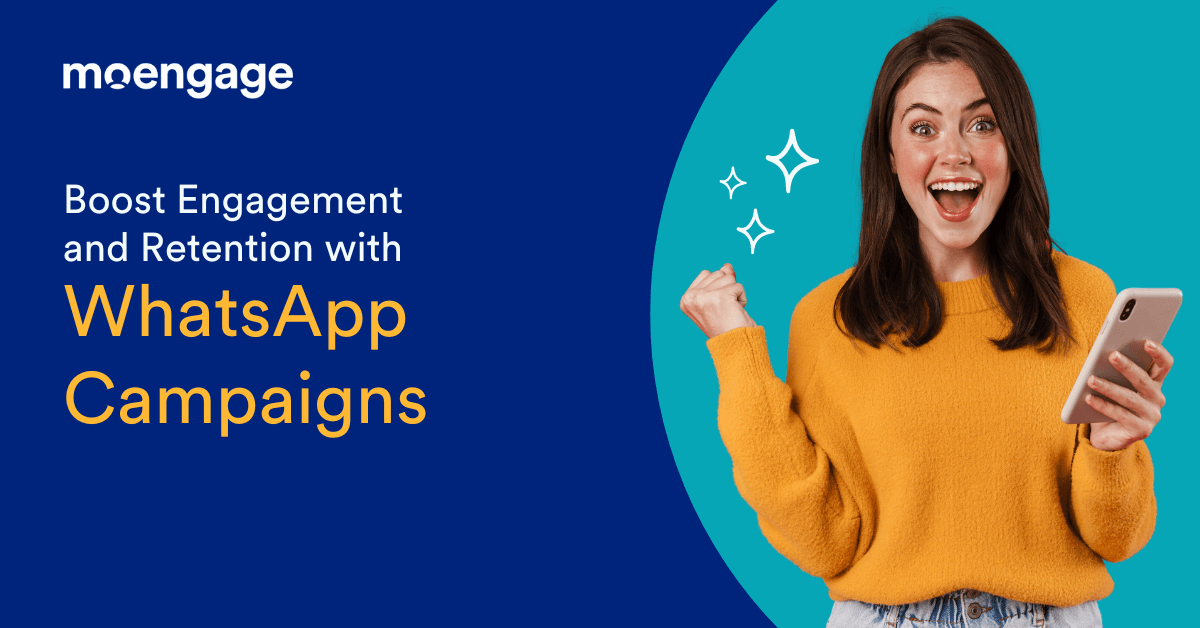
With over 2 billion monthly active users, every marketer wants to try their luck with a WhatsApp marketing campaign. But sending irrelevant and spam-like messages can do your brand more harm than good.
WhatsApp is the common man’s communication channel. To put things into perspective, there are over 5.18 billion internet users in the world.
Anyone with an internet connection can download the app and get started. Capitalizing on this global market base makes business sense.
In this guide, we will cover WhatsApp campaigns in depth and help you understand how you can add brand value to your WhatsApp marketing.
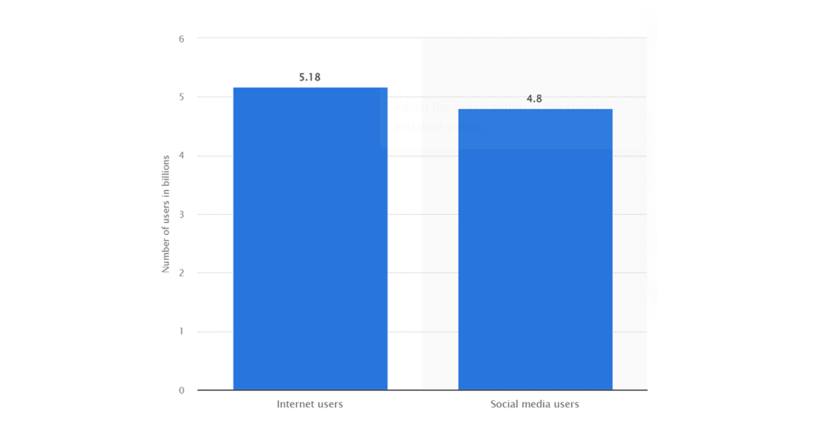
Bring out Your A-Game with WhatsApp Campaign Marketing
1.) Maggi Germany – Helping People Learn to Cook with the WhatsApp Business App
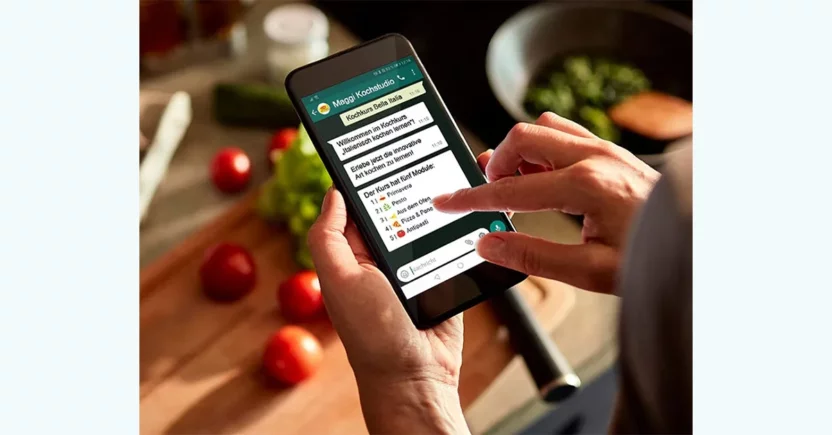
The Objective:
To improve the brand’s customer engagement and retention efforts using cost-effective technology–in this case, WhatsApp.
The Solution:
Developing an entertaining and interactive virtual cooking course on WhatsApp featuring a digital assistant, Kim.
The Results:
With the WhatsApp-powered digital assistant, Maggi offered more personalized communication and a unique educational experience to customers, resulting in one of the most successful WhatsApp marketing campaigns:
- 200,000 messages received in the first 8 weeks
- 4.2-point lift in standard ad recall
- 3-point lift in campaign awareness
| Food for thought: WhatsApp-powered chatbots can open new opportunities for brands to connect with customers in real time. |
2.) Vodafone Leveraged TOBi, an Artificial Intelligence (AI) WhatsApp Bot, to Elevate Its Customer Experience
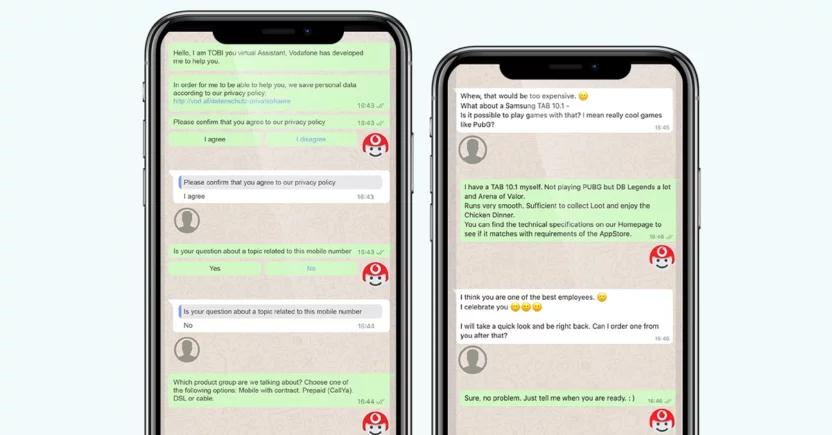
The Objective:
To improve Vodafone’s customer experience.
The Solution:
The brand developed an AI-powered WhatsApp chatbot that allowed customers to get instant and relevant responses. Customers could save their chat history, share images and documents related to their queries, and start a chat anywhere and at any time.
The Results:
- This self-learning bot can recognize more than 250 intents
- On the first day, more than 1,000 customers reached out to Vodafone via the WhatsApp channel
- After six months, 10% of the volume of the requests had shifted from call centers to messaging
- Currently, more than 200,000 Vodafone customers are serviced
each month via the WhatsApp channel, and 52% of them
get their problems solved there without having to go to a live chat or a hotline
3.) Airtel Xstream Witnessed a 30% Increase in Conversion Rates
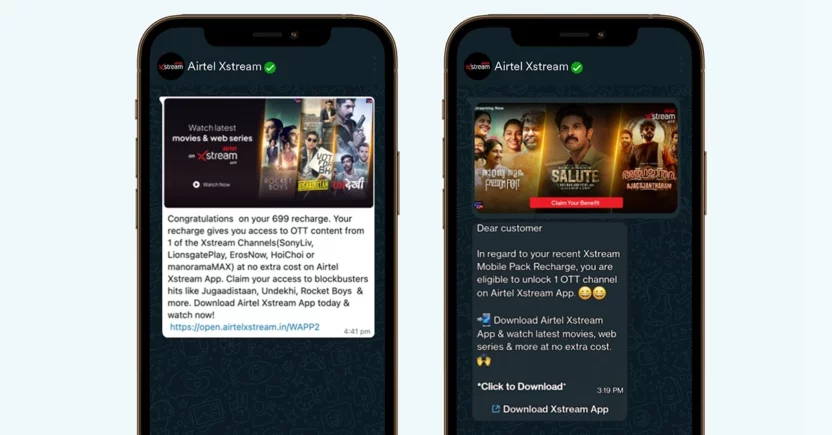
The Objective:
To increase the adoption rate of the platform with WhatsApp as the engagement channel.
The Solution:
Airtel Xstream wanted to inform customers about the plethora of world-class content available. So, they decided to go with WhatsApp, a platform that customers already use actively. The idea was to keep customers in the loop about new programs and shows. Plus, every time a customer did a recharge, they would receive promotional messages about potential Airtel Xstream opportunities they could enjoy.
Using WhatsApp as an immersive engagement tool via MoEngage also allowed the brand to integrate a CTA that landed customers on the brand’s platform. WhatsApp doubled up as an excellent lead-generation channel.
The Results:
- 90% above the delivery rate
- 29.67% conversion rate
- Up to 40x* increase in engagement compared with push
- Up to 4x* increase in engagement compared with in-app
Read more about how they achieved results with WhatsApp marketing here.
4.) Omay Foods Experienced a 5X Growth in Sales Using WhatsApp
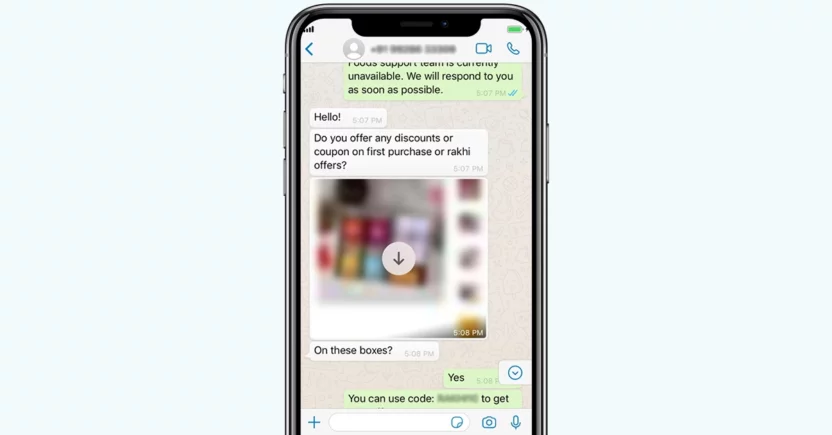
The Objective:
To improve the conversion rate for business-to-business customers.
The Solution:
The popular snacking brand leveraged the WhatsApp Business app to do the unthinkable–convert repeating customer questions into repeat business.
It used WhatsApp to:
- Guide new customers during the ordering process
- Offer customers a convenient and quick method to shop with/text the business directly
- Help potential customers ask questions and start conversations in a few clicks
- Build credibility as well as trust by leveraging customer-friendly features such as quick replies, catalog, and business profile
The Results:
- 5X increase in customer inquiries via WhatsApp compared to the previous email contact channel
- 3X increase in repeat customers via WhatsApp
- 5X increase in sales for retail channels
5.) Bank Mandri Drove Conversion Rates by 37%
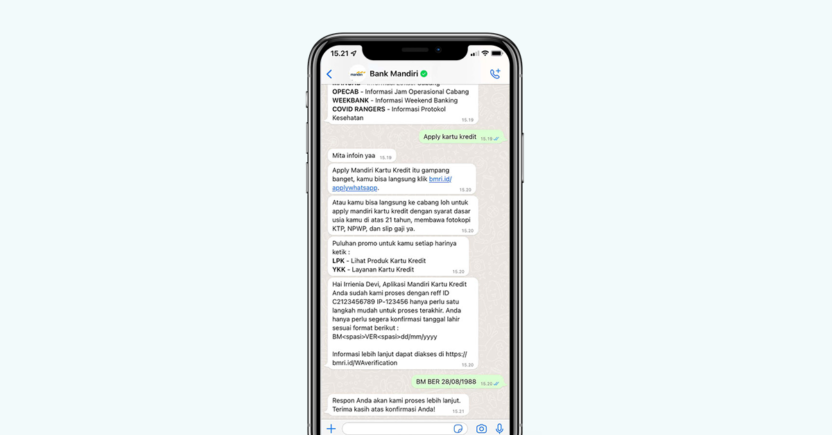
The Objective:
To re-engage existing customers with automated push notifications.
The Solution:
Indonesia-based Bank Mandri wanted to drive conversions for installment payment schedules. They also wanted to enable the process of verifying credit card applications on WhatsApp.
The brand used WhatsApp to:
- Integrate automated workflows within their existing processes and streamline all the moving customer support and sales systems
- Deflect repetitive and time-consuming customer inquiries from live agents and reduce the latter’s workload
- Boost the bottom line by driving new credit card applications in a convenient way
- Send relevant and timely messages to credit card customers who had opted-in and who transacted above a predefined amount
- Convert the purchase transaction into an ROI-driven installment scheme, quickly and easily
The Results:
- 42% increase in net margin interest income
- 56% increase in responses by credit card applicants to verification notifications
- 37% boost in conversions
- WhatsApp emerged as the #1 channel for conversions over SMS, call center, website, telesales, and mobile app
| Food for thought: Using WhatsApp for conversational commerce can empower brands to deliver a frictionless and convenience-based experience. WhatsApp is an innovative tool that goes beyond sending creative text messages. It can help customers shop easily with one click. It can enable brands to connect with customers on demand. It reduces churn and boosts customer satisfaction while saving the business money. No matter which way you slice the cake, it’s a win-win for all. |
Further reading: Learn how your business can drive WhatsApp marketing campaigns in 2023 with these ready-to-use campaign ideas.
SMS vs. WhatsApp: When to Use Which?
Both SMS and WhatsApp forms of marketing seem similar at the outset. But they differ in the way and how you should use them.
Use SMS Marketing When You Want To:
- Reach a broader audience, including people who don’t use smartphones or have limited internet access.
- Send time-sensitive and real-time promotions, discounts, and offers.
- Broadcast concise, to-the-point, and urgent alerts as well as emergency notifications. For example, Singaporeans get SMS alerts during major emergencies.
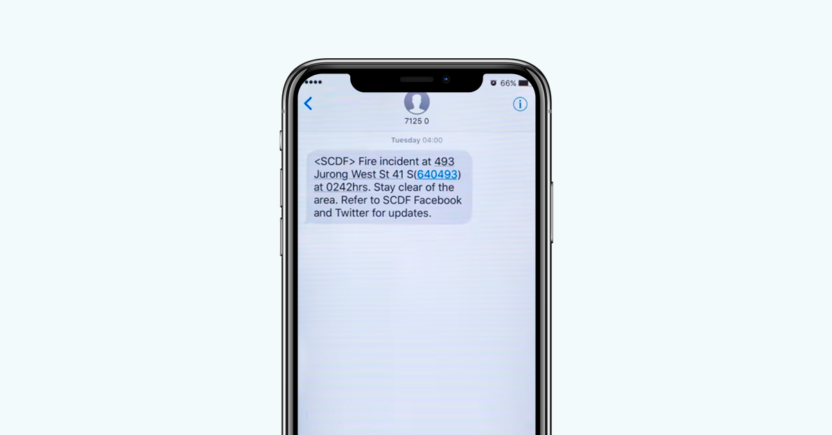
Use WhatsApp Marketing When You Want To:
- Send personalized messages and offers based on customer preferences.
- Share informative content, such as blog articles, product catalogs, or educative information.
- Enable two-way communication with customers, such as addressing their inquiries or offering basic information.
- Send longer messages that are integrated with multimedia elements such as images, videos, and documents.
| Pro tip: The choice between SMS and WhatsApp will depend on various factors such as message content, target audience, and desired level of interactivity. Consider the specific use case and intended outcome to determine which platform is most suitable for your communication needs. |
How to Start Your WhatsApp Marketing Campaign?
Similar to creating a Facebook or Instagram profile, you’ll need to first create a WhatsApp Business profile. There’s no coding involved. Here’s a step-by-step lowdown:
Step 1: Determine Your Offerings and Target Audience
To narrow in on a target audience, ask yourself the following questions:
- Why will customers reach out to your brand’s WhatsApp channel? Will they want to discuss an issue? Do they want more information about new products or discounts?
- What kind of languages do your customers speak?
- What are their primary pain points?
- What will the tone of your WhatsApp marketing campaign be?
Based on all these inputs, you can research further, define your target audience, and build an accurate brand persona.
Step 2: Select an Official WhatsApp Integration Partner
If you want to set up your WhatsApp business API quickly and correctly, partner with a solutions provider.
You won’t have to worry about data compliance or coding. You won’t need to spend extra time, money, or resources in setting up your profile. Plus, you can easily integrate all of your CRM data in a centralized place.
When selecting a reliable partner:
- Conduct thorough research to find a reputable WhatsApp API solution partner that aligns with your specific business needs.
- Look for partners with a proven track record, good customer support, and compliance with WhatsApp’s guidelines.
- Evaluate the features and capabilities offered by different solution providers, such as message automation, analytics, and integration options.
| Pro tip: Your partner may require a few things right off the bat, such as a Facebook Business Manager ID, a mobile number that does not have an active WhatsApp account, and a clear and relevant display name that communicates what your brand does. Keep these handy. |
Step 3: Build Out Your Customer Service WhatsApp Marketing Strategy
Define your approach to customer service on WhatsApp. Will you need an automated chatbot, live agent, or both?
Determine how you will handle customer inquiries without letting go of the human touch.
If you are setting up a customer service team:
- Establish clear response timeframes and guidelines
- Equip them with the necessary resources to provide satisfactory assistance
- Track the team’s performance at every step
Step 4: Create Your Contact List
The WhatsApp Business app offers two types of communication: business-initiated and user-initiated. To be able to interact with your brand, your customers need to opt in and agree to receive messages on their private contact numbers.
To create a contact list, use a mix of these strategies:
- Promote your WhatsApp presence through various channels, such as your website, social media profiles, and email newsletters.
- Highlight the benefits and value that customers can expect by opting in to receive WhatsApp communications from your brand.
- Implement opt-in mechanisms to capture customer consent and phone numbers.
- Offer incentives, such as exclusive discounts or valuable content, to encourage customers to share their contact information willingly.
- Add a clearly visible click-to-chat URL within your email marketing campaign.
Step 5: Follow the WhatsApp Marketing Rules
Take a look at the WhatsApp guidelines before you get started. Note that WhatsApp will need to approve your template messages. Sticking to the guidelines will accelerate the approval process.
| Pro tip: For a WhatsApp post, the optimal image size is 800×800 px, and for a profile image, the ideal size is 500×500 px. |
10 Pros and Cons of WhatsApp Campaigns
When considering WhatsApp campaigns, you need to weigh the benefits and potential drawbacks. This will help ensure that your messaging aligns with your target audience’s preferences (and expectations):
Pros of WhatsApp Campaigns |
Cons of WhatsApp Campaigns |
| 1. Allows for 1:1, instant, and 24×7 communication with customers | 1. Inability to make calls using the WhatsApp API |
| 2. Higher engagement and response rates compared to other channels | 2. Account verification may be troubling or time-taking |
| 3. Ability to send rich media content like images, videos, and documents | 3. Potential for message overload if not carefully managed |
| 4. Delivers personalized and targeted messaging based on customer preferences, leading to higher revenues and engagement | 4. It may be seen as intrusive if messages are not relevant or desired |
| 5. Allows for two-way communication in order to extend real-time customer support | 5. Dependence on internet connectivity may hinder message delivery in areas with poor reception |
| 6. Cost-effective option compared to traditional SMS campaigns | 6. Brands must respond immediately (or within 24 hours at the maximum) |
| 7. Provides an opportunity to create customer communities and foster brand loyalty | 7. Strict regulations and privacy concerns need to be addressed for compliance |
| 8. Offers increased visibility and awareness through WhatsApp’s large user base | 8. Customers may mute or ignore promotional messages, reducing the effectiveness |
| 9. Allows for seamless integration with other digital marketing channels for a cohesive strategy | 9. Limited ability to automate and schedule messages, requiring manual management |
| 10. Access to real-time feedback and insights from customers for better campaign optimization | 10. Possibility of message forwarding and misuse, leading to potential spamming |
Ready to Use WhatsApp and Boost Engagement?
Customers today are too time-pressed and overwhelmed, owing to the barrage of messages they receive on their email or any other channel for that matter. If you want to make your interactions quick, effective, and seamless, WhatsApp campaigns are a great start.
WhatsApp marketing allows you to connect with customers in the moment. Customers don’t need to go the extra mile to get the personalized support they need. Plus, brands can leverage this form of marketing to optimize all stages of the sales funnel—a win-win for all.
Are you ready to supercharge your sales and customer support operations with an easy-to-execute WhatsApp marketing app?












